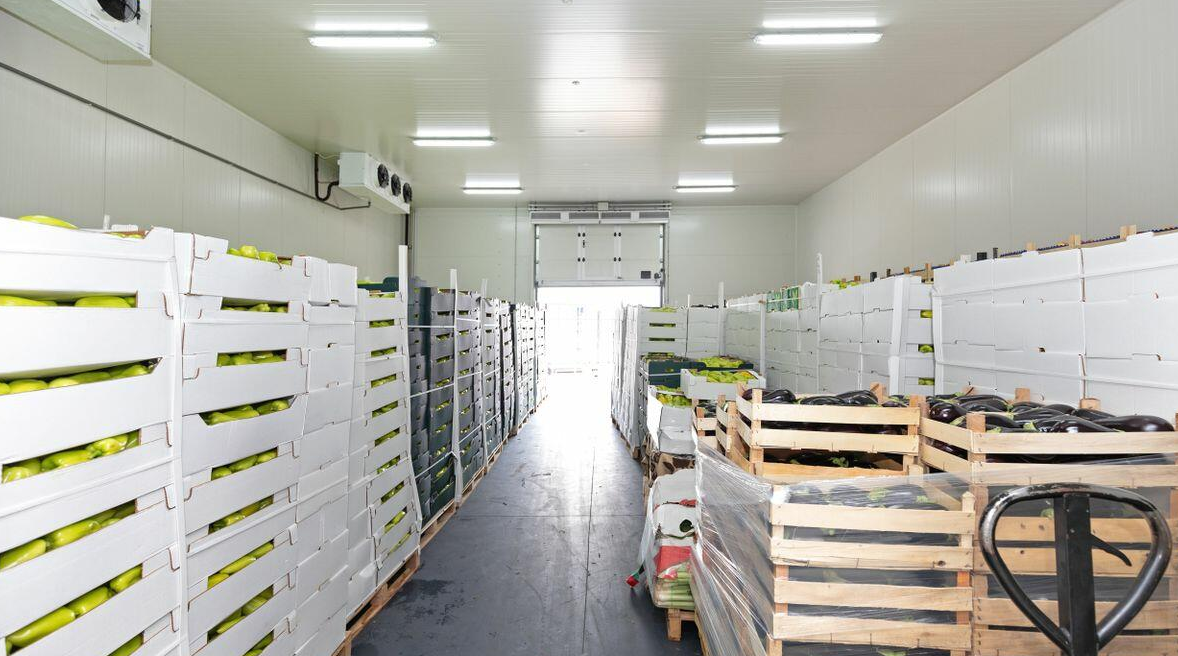 By Erin Wong
By Erin Wong
Demand for cold storage has soared in recent years as consumers increasingly shop for online groceries and frozen food. Frozen food sales reached $72.2 billion in 2022, a 34% bump from 2019.
Online grocery sales have also surged since the pandemic began and are expected to see double-digit annual growth over the next five years, putting pressure on cold supply chains to keep pace.
For decades, innovations in the food and pharmaceutical industries pushed up the value of products moving through the cold chain, driving steady construction and improvements in technology to support it. But cold storage supply chain capacity hit a ceiling in the pandemic, as companies held more inventory and e-commerce demand skyrocketed.
To ward against future bottlenecks, food manufacturers and their partners are actively working to find more room.
“We are not out of the woods yet,” said Jon Wong, VP of logistics, operations and supply chain chief of staff at Amy’s Kitchen. According to Wong, utilization rates at both the company’s own facilities and its third-party partners still run relatively tight at 85% capacity, rather than the ideal 80%. In the pandemic, their team witnessed some locations exceed 115% capacity.
The challenge now is that cold storage development takes time and significant capital investment, at a time when real estate developers face difficulty financing new projects. Despite some headwinds, data from real estate investor CBRE suggests projects will still proliferate faster than pre-pandemic rates.
Speculative development for cold storage shot up from 300,00 square feet in 2019 to roughly 3.3 million square feet in Q2 2022, according to CBRE. And while that number has come down slightly so far this year to 1.8 million square feet delivered through September, growth is still up, especially in the Southeast.
Activist Post is Google-Free — We Need Your Support
Contribute Just $1 Per Month at Patreon or SubscribeStar
By the numbers
- 3.3 million square feet: The amount of speculative cold storage development underway in the U.S. as of Q2 2022
- 71%: The percent of U.S. cold storage space owned by Americold Logistics and Lineage Logistics
- 3.7 billion cubic feet: The U.S.’s gross refrigerated storage capacity
Amanda Ortiz, director of U.S. industrial and logistics research at CBRE, believes it will be challenging for cold storage capacity to keep pace with skyrocketing demand for e-commerce.
If an e-commerce producer starts to grow, that growth can scale very quickly, Ortiz said, and the company may be disappointed by the current cold storage options on the market. The vast majority of cold storage facilities were built more than two decades ago and often lack updated cooling technology.
On the production side, small food manufacturers feel the competition for cold storage in their bottom line.
New England seaweed producer Atlantic Sea Foods witnessed price bumps from $20 per pallet per month to $50 in the past few years, according to Casey Ballin, director of operations and sustainability. Freight rates for cold storage add another cost, with less than truckload shipping often at least as expensive as leasing the entire vehicle, Ballin said.
Because of limited capacity at public warehouses, Atlantic Sea Farms now stores its frozen pallets across six different locations, and the company is experimenting with dried products to avoid cold storage costs entirely, Ballin said. The company has been kicked out of at least one warehouse in favor of businesses with short-term storage needs, which pay more regular in-and-out fees, Ballin added.
Ballin hopes that in the future, there will be online platforms that help to connect producers with available freight space, as they currently rely on word of mouth. His company currently partners with larger lobster companies trucking from Maine to Massachussetts.
“We have to be scrappy, and we have to be creative,” Ballin said, “There’s definitely innovation waiting to happen here.”
Cold storage capacity in the post-pandemic era
At large producers, as well as small, efficiency depends on food manufacturers’ ongoing dialogue with third-party logistics providers.
Throughout the pandemic, some of Amy’s Kitchen’s North American partners simply couldn’t take anymore product, Wong said. Once the partners sounded the alarm, Amy’s Kitchen responded by redistributing pallets to other regions, sometimes supporting its partners by transporting freight from other brands.
Now past the pandemic heyday, the company is investing in better forecasting for both ends of its supply chain.
“You have to have this harmonious relationship across the board,” Wong said, “And it’s never harmonious, because you’re constantly dealing with the unknowns.”
Source: Supply Chain Dive via ZeroHedge
Become a Patron!
Or support us at SubscribeStar
Donate cryptocurrency HERE
Subscribe to Activist Post for truth, peace, and freedom news. Follow us on SoMee, Telegram, HIVE, Minds, MeWe, Twitter – X, Gab, and What Really Happened.
Provide, Protect and Profit from what’s coming! Get a free issue of Counter Markets today.
